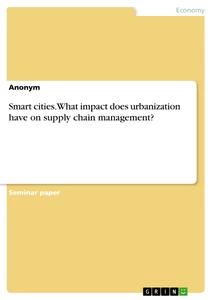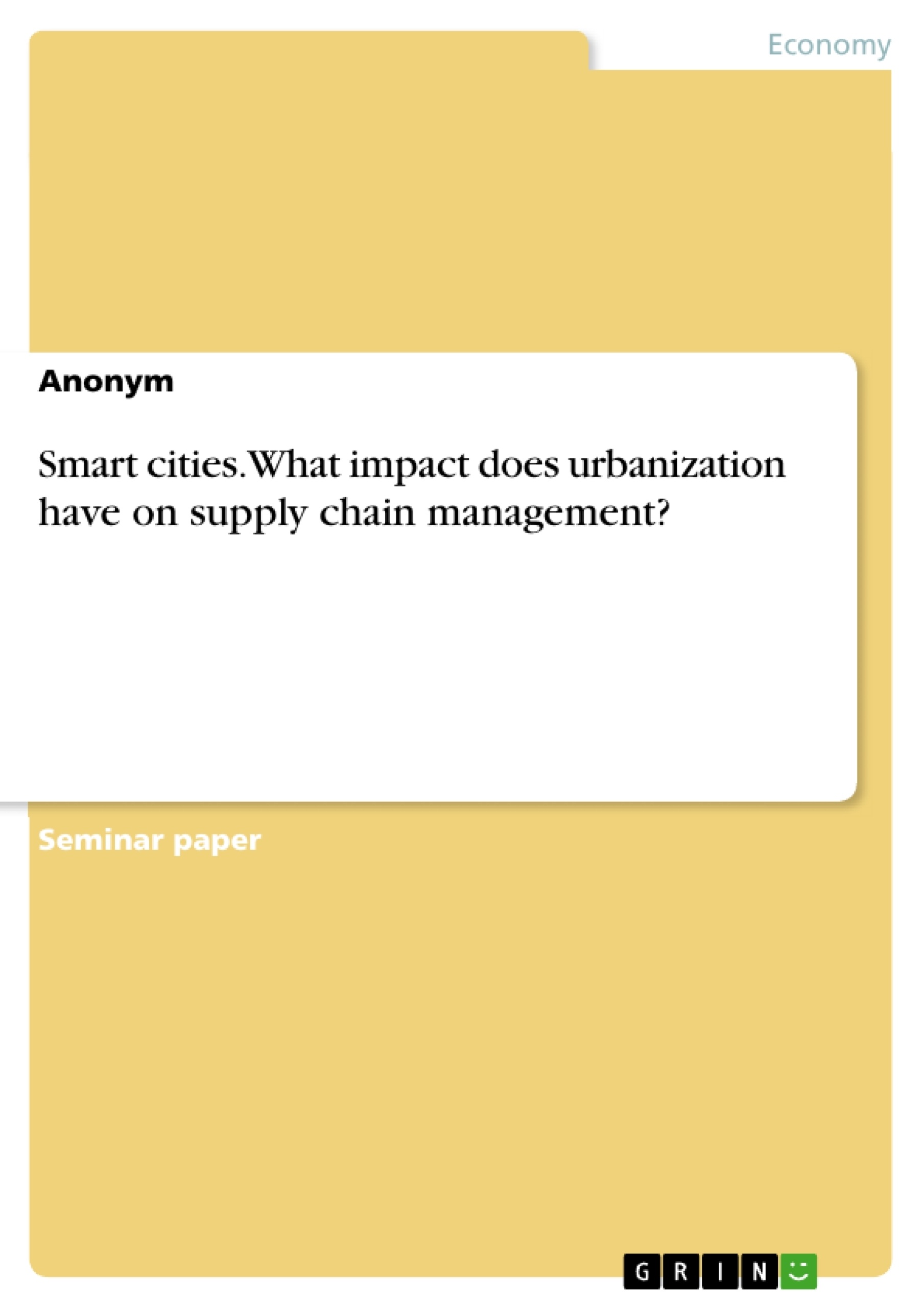Excerpt
Table of contents
List of abbreviations
List of illustrations
List of tables
1 Introduction
1.1 Issue statement
1.2 Goal and approach
2 Smart Cities and SCM
2.1 Characteristics of smart cities
2.2 Opportunities and challenges for SCM
3 Managerial implications
4 Conclusion
Appendix
Appendix 1. Overview of the six smart city characteristics
Appendix 2. Other relevant definitions
List of references
Excerpt out of 18 pages
- Quote paper
- Anonymous, 2019, Smart cities. What impact does urbanization have on supply chain management?, Munich, GRIN Verlag, https://www.grin.com/document/500322
Publish now - it's free
✕
Excerpt from
18
pages






















Comments